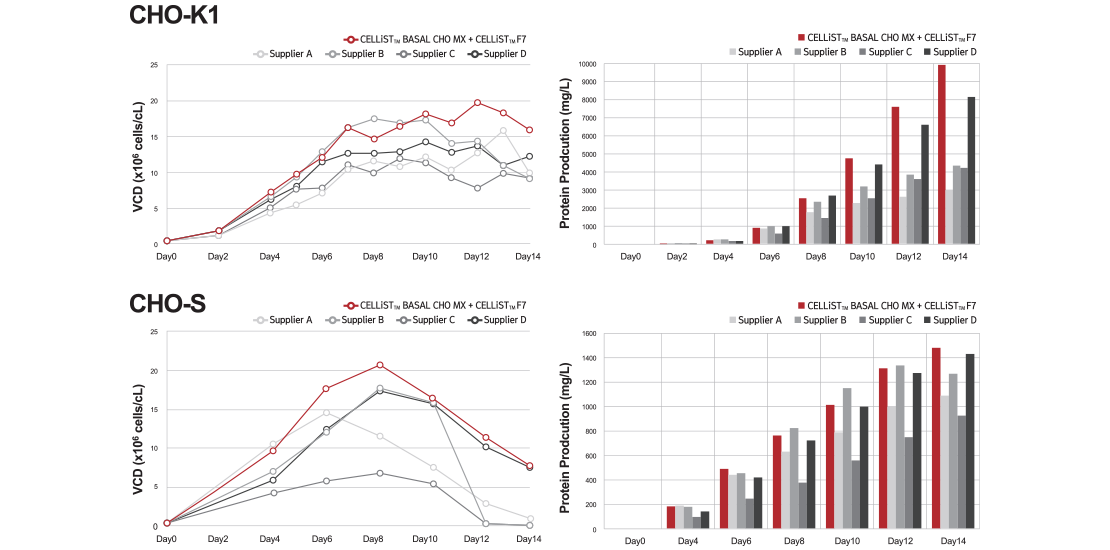
 |
Product Basal Media
CELL CULTURE MEDIA
Ajinomoto CELLiST Korea’s CELLiST™ BASAL Media for Chinese Hamster Ovary (CHO) cell lines are developed based on Ajinomoto’s strong capabilities in amino acid technology and over 30 years of experience in the cell culture media business. CELLiST™ Media are high-performance, chemically-defined media, free from any animal-derived ingredients.


growth medium provides optimal balance of amino acids and other nutrients to ensure adequate cell growth and maximum productivity of your process. BASAL CHO MX Medium is completely chemically-defined and does not contain any animal or plant-derived components.
| Model No. | BASAL CHO MX |
|---|---|
| TYPE | Powder |
| Concentration | 23.0g / L |
| With Additives | D-Glucose · Poloxamer |
| Without Additives | L-Glutamine · Sodium hydrogen carbonate · Thymidine Hypoxanthine · Insulin and other growth factors |
| Storage Condition | 2℃ to 8℃, dark and dry |
| Shelf Life | 24 months |
| Item Description | Powder, chemically defined and animal derived component free medium, rehydrate to 1 L |
Comparative studies show superior culture growth and productivity with the CELLiSTTM BASAL CHO MX + CELLiSTTM F7 media combination. In a fed-batch process using CHO-K1 and CHO-S cell lines expressing IgG1 antibody, our media outperforms top global competitors in viable cell density and IgG titer.

Figure 1: Fed-batch process was performed in an Ambr®15 system (CHO-K1) and 125 mL flasks (CHO-S), respectively. Feeding in CELLiSTTM group was performed at a concentration of 6% (v/v) on days 4, 6, 8, 10, and 12. ‘Supplier A, B, C and D’ represent basal/feed media combinations from major media suppliers. Culture and feeding manners for supplier A, B, C and D were performed according to each manufacturer’s recommendations.
Scalability
As can be seen below, CELLiSTTM BASAL CHO MX medium is suitable for use in various culture scales
from small scale microbioreactors to larger scale 200L bioreactors. CELLiSTTM BASAL CHO MX medium
shows consistent performance in terms of cell growth and productivity regardless of scale.

Figure 2. Viable cell density and IgG titer profiles during the 14 days of fed-batch culture. Three types of bioreactors were used: microbioreactors (Ambr®15), 3L bench-top reactor and 200L bioreactor.